M
I
C
R
O
S
T
O
R
Y
O
F
A
R
T
........................................................

NOW COMPLETED:

........................................................
MICROSTORY OF ART
ONLINE JOURNAL FOR ART, CONNOISSEURSHIP
AND CULTURAL JOURNALISM
........................................................
INDEX | PINBOARD | MICROSTORIES |
FEATURES | SPECIAL EDITIONS |
HISTORY AND THEORY OF ATTRIBUTION |
ETHNOGRAPHY OF CONNOISSEURSHIP |
SEARCH

........................................................



 >MICROSTORIES
>MICROSTORIES
- Richard Serra
- Martin Scorsese
- Claude Simon
- Sunshine
- Werner Herzog
- The Creation
- Marcel Duchamp
- Nino Rota
- Wölfflin and Woolf
- Hansjörg Schneider
- Kraftort Arkadien
- Visual Biography
- Schlaraffenleben
- Die Geisteswissenschaften
- The Voyeur
- Buzzword Sustainability
- Paul Verlaine
- Tao Yuanming
- New Beginning
- Seneca
- Still Lifes
- Charles Baudelaire
- Frédéric Chopin
- The Art History of Sustainability
- Wang Wei
- Solarpunk
- Historians of Light
- Lepanto
- Renaturalization
- Plates
- Snow in Provence
- Learning to See
- Picasso Dictionaries
- Peach Blossom Spring
- Picasso Tourism
- Tipping Points
- Sviatoslav Richter
- Weather Reports
- Treasure Hunt
- Another Snowscape in Picasso
- Picasso in 2023
- Dragon Veins
- The Gloomy Day
- The Art of the Pentimento
- Reforestation
- The Status of Painting
- Emergency Supply
- Punctuality
- Watching Traffic
- Zhong Kui
- How Painting Survived the 1990s
- Confirmation Bias
- Sustainability and Luxury
- Garage Bands
- Picasso and Artificial Intelligence
- Eyes of Tomorrow
- Picasso in 2023 2
- Gluing Oneself to Something
- Suburbia
- Bamboo
- Sustainability and Carpe Diem 1
- Interviews with Bruegel
- Sustainability and Carpe Diem 2
- Coffee & Sugar
- Bamboo 2
- Picasso in 2023 3
- Sustainability and Carpe Diem 3
- Cherry Orchard
- Old Magazines
- Chance
- Nick Drake
- Harlequin
- The Smartphone & the Art Book
- Atlas Syndrome
- The Kitchen
- Atlas Syndrome 2
- Consideration
- Tori Amos
- School
- Orchard Auctioning Day
- The Hundred Years’ War
- Sócrates
- Chameleon
- Nefertiti Bust
- Picasso as a Computer
- Sunflowers
- Philemon & Baucis
- Ode to the Radio
- Childhood
- Wimmelbild
- Restitution
- Nick Drake 2
- Wishful Thinking
- Sundays
- The Independent Scholar
- September
- The Fisherman by Pirosmani
- Microadventure
- Sociology
- Salvator Mundi
- Chillon
- Appassionata
- Amber
- Homer
- Berlin
- Planet Walk
- Improvisation
- Seeing Picasso
- These Nice Kids
- Robber
- The One
- The Sea Turtle
- Zoo
- Through the Hush
- Wunderkammer
- I Do Not Seek, I Find
- Shopping Mall
- Food Hamper
- The Secretary
- This Gate
- Nor Rainy Day
- House on a Hill
- Beautiful Island
- Second-hand Bookstore
- Flat
- Slap in the Face
- Serra, Wenkenpark
- Apologies
- The Bells
- Nordmann Fir
- Picasso Wanting To Be Poor
- Picasso, Pirosmani
- A Brief History of Sculpture
- 24 Sunsets
- Rusty Phoenix
- Glove
- Wintry Stanza
- A Song
- Like A Beatle
- Catching An Orange
- Solar Bees
- Permaculture

 >FEATURES
>FEATURES
- Van Gogh On Connoisseurship
- Two Museum’s Men
- Ende Pintrix and the City in Flames
- Titian, Leonardo and the Blue Hour
- The Man with the Golden Helmet: a documentation
- Un Jury d’admission à l’expertise
- Learning to See in Hitler’s Munich
- Leonardo da Vinci and Switzerland
- The Blue Hour Continued
- The Blue Hour in Louis Malle
- Kafka in the Blue Hour
- Blue Matisse
- Blue Hours of Hamburg and LA
- A Brief History of the Cranberry
- The Other Liberale in the House
- The Blue Hour in Raphael
- Who Did Invent the Blue Hour?
- Monet on Sustainability
- Velázquez and Sustainability
- The Blue Hour in Guillaume Apollinaire
- Van Gogh on Sustainability
- The Blue Hour in Marcel Proust
- Picasso and Sustainability
- The Contemporary Blue Hour
- The Blue Hour in 1492
- The Blue Hour in Hopper and Rothko
- Hopper and Sustainability
- The Blue Hour in Ecotopia
- The Hour Blue in Joan Mitchell
- Explaining the Twilight
- The Twilight of Thaw
- The Blue Hour in Pierre Bonnard
- Explaining the Twilight 2
- Picasso on Stalin
- Rubens on Sustainability
- The Salvator Mundi in Bruegel and Rubens
- The Blue Hour in Leonardo da Vinci and Poussin
- The Blue Hour in Rimbaud
- Faking the Dawn
- Frost and Thaw in Ilya Ehrenburg
- Picasso, Stalin, Beria
- Picasso, Solzhenitsyn and the Gulag
- Shostakovich on Picasso
- Hélène Parmelin in 1956
- Historians of Picasso Blue
- Picasso Travelling to Moscow 1
- The Blue Hour in Caravaggio
- Picasso Travelling to Moscow 2
- Picasso, the Knife Game and the Unsettling in Art
- Some Notes on Leonardo da Vinci and Slavery
- Picasso Moving to the Swiss Goldcoast
- The Blue Hour in Camus
- The Blue Hour in Symbolism and Surrealism
- Caspar David Friedrich in His Element
- Exhibiting the Northern Light
- Caspar David Friedrich in His Element 2
- Robert Schumann and the History of the Nocturne
- The Blue Hour in Robert Schumann
- Caspar David Friedrich and Sustainability
- The Twilight of Thaw 2
- Multicultural Twilight
- The Blue Hour in Anton Chekhov
- The Blue Hour in Medieval Art
- Twilight Photography
- The Blue Hour in Bob Dylan
- Iconography of Optimism

 >SPECIAL EDITIONS
>SPECIAL EDITIONS
- Visions of Cosmopolis
- Mona Lisa Landscapes
- Turner and Ruskin at Rheinfelden
- Painters On TV & On TV
- Spazzacamini in Art
- A Last Glance at Le Jardin de Daubigny
- The Experimental Cicerone
- A Dictionary of Imaginary Art Historical Works
- Iconography of Blogging
- Begegnung auf dem Münsterplatz
- Cecom
- Das Projekt Visual Apprenticeship
- Those Who See More
- A Fox on Seeing with the Heart
- Sammlung Werner Weisbach
- Daubigny Revisited
- Some Salvator Mundi Microstories
- Some Salvator Mundi Afterthougths
- Some Salvator Mundi Variations
- Some Salvator Mundi Revisions
- A Salvator Mundi Questionnaire
- A Salvator Mundi Puzzle
- Unknown Melzi
- Francis I and the Crown of Charlemagne
- From Amboise to Fontainebleau
- Drones Above Chambord
- Looking Back At Conques
- Flaubert At Fontainebleau
- Images of Imperial Ideology
- The Chronicles of Santa Maria delle Grazie
- Seeing Right Through Someone
- Melzi the Secretary
- Eying Glass
- A Foil to the Mona Lisa
- A Renaissance of the Cartoon
- Sketching a Family Tree
- Venetian Variations
- A Brief History of Digital Restoring
- A Consortium of Painters
- Leonardeschi and Landscape
- A Christ in Profile
- Learning to See in Spanish Milan
- A History of Gestures
- Leonardo and Josquin
- A Renaissance of the Hybrid
- Suida and Heydenreich
- The Watershed
- Three Veils
- From Beginning to End
- Connoisseurship of AI
- Twilight and Enlightenment
- The Blue Hour in Chinese Painting
- Dusk and Dawn at La Californie
- Iconography of Sustainability
- The Blue Hour in Goethe and Stendhal
- The Sky in Verlaine
- The Blue Hour in Paul Klee
- Iconography of Sustainability 2
- The Blue Hour in Charles Baudelaire
- From Bruegel to Solarpunk
- Some Salvator Mundi Documentaries
- Some More Salvator Mundi Monkey Business
- The Windsor Sleeve
- Brigitte Bardot’s Encounter with Picasso
- Art Historians and Historians
- A Salvator Mundi Chronicle
- The Salvator Mundi and the French Revolution
- The Fontainebleau Group
- The Encounter of Harry Truman with Pablo Picasso
- The Fontainebleau Group Continued
- The Windsor Sleeve Continued
- The Salvator Mundi in Early Netherlandish Painting 1
- Some Salvator Mundi Resources
- A New Salvator Mundi Questionnaire
- The Woman in Picasso
- The Yarborough Group
- Melzi, Figino and the Mona Lisa
- The Yarborough Group Continued
- A Salvator Mundi Global History
- The Salvator Mundi in Medieval Art
- The Salvator Mundi in Medieval Art 2
- The Salvator Mundi in Early Netherlandish Painting 2


 >HISTORY AND THEORY OF ATTRIBUTION
>HISTORY AND THEORY OF ATTRIBUTION
- The Mysterious »Donna Laura Minghetti-Leonardo«
- Assorted Demons of Connoisseurship
- Panofsky Meets Morelli
- Discovering the Eye of Sherlock Holmes
- Handling the Left-handed Hatchings Argument
- Visual History of Connoisseurship
- Alexander Perrig
- Connoisseurship in 2666
- What Postmodernity Has Done to Connoisseurship
- Dividing Four Fab Hands
- A Leonardesque Ambassador
- Test Cases in Connoisseurship
- A Raphael Expertise
- How to Tell Titian from Giorgione
- Louise Richter
- The Unique Property in the History of Connoisseurship
- An Expertise by Berenson
- The Book of Expertises
- An Album of Expertises
- An Expertise by Friedländer
- A Salvator Mundi Provenance
- How to Tell Leonardo from Luini
- An Expertise by Crowe and Cavalcaselle
- An Expertise by Bayersdorfer
- An Expertise by Hermann Voss
- An Expertise by Hofstede de Groot
- Leonardeschi Gold Rush
- An Unknown »Vermeer«
- An Expertise by Roberto Longhi
- An Expertise by Federico Zeri
- A Salvator Mundi Geography
- A Salvator Mundi Atlas
- The Bias of Superficiality
- 32 Ways of Looking at a Puzzle
- James Cahill versus Zhang Daqian
- Five Fallacies in Attribution
- On Why Art History Cannot Be Outsourced to Art Dealers
- On Why Artificial Intelligence Has No Place in Connoisseurship
- Salvator Mundi Scholarship in 2016
- Leonardo da Vinci at the Courts
- The Story of the Lost Axe
- The Last Bruegel
- A Titian Questionnaire
- On Where and Why the Salvator Mundi Authentication Did Fail
- The Problem of Deattribution

 >ETHNOGRAPHY OF CONNOISSEURSHIP
>ETHNOGRAPHY OF CONNOISSEURSHIP
MICROSTORY OF ART
ONLINE JOURNAL FOR ART, CONNOISSEURSHIP
AND CULTURAL JOURNALISM
........................................................

***
ARCHIVE AND FURTHER PROJECTS

1) PRINT


***
2) E-PRODUCTIONS


........................................................

........................................................

........................................................
FORTHCOMING:


***
3) VARIA

........................................................

........................................................

........................................................

........................................................

........................................................
***
THE GIOVANNI MORELLI MONOGRAPH

- The Giovanni Morelli Monograph
........................................................
MICROSTORY OF ART
ONLINE JOURNAL FOR ART, CONNOISSEURSHIP AND CULTURAL JOURNALISM
HOME
MICROSTORY OF ART ONLINE JOURNAL FOR ART, CONNOISSEURSHIP AND CULTURAL JOURNALISM Leonardo and Josquin 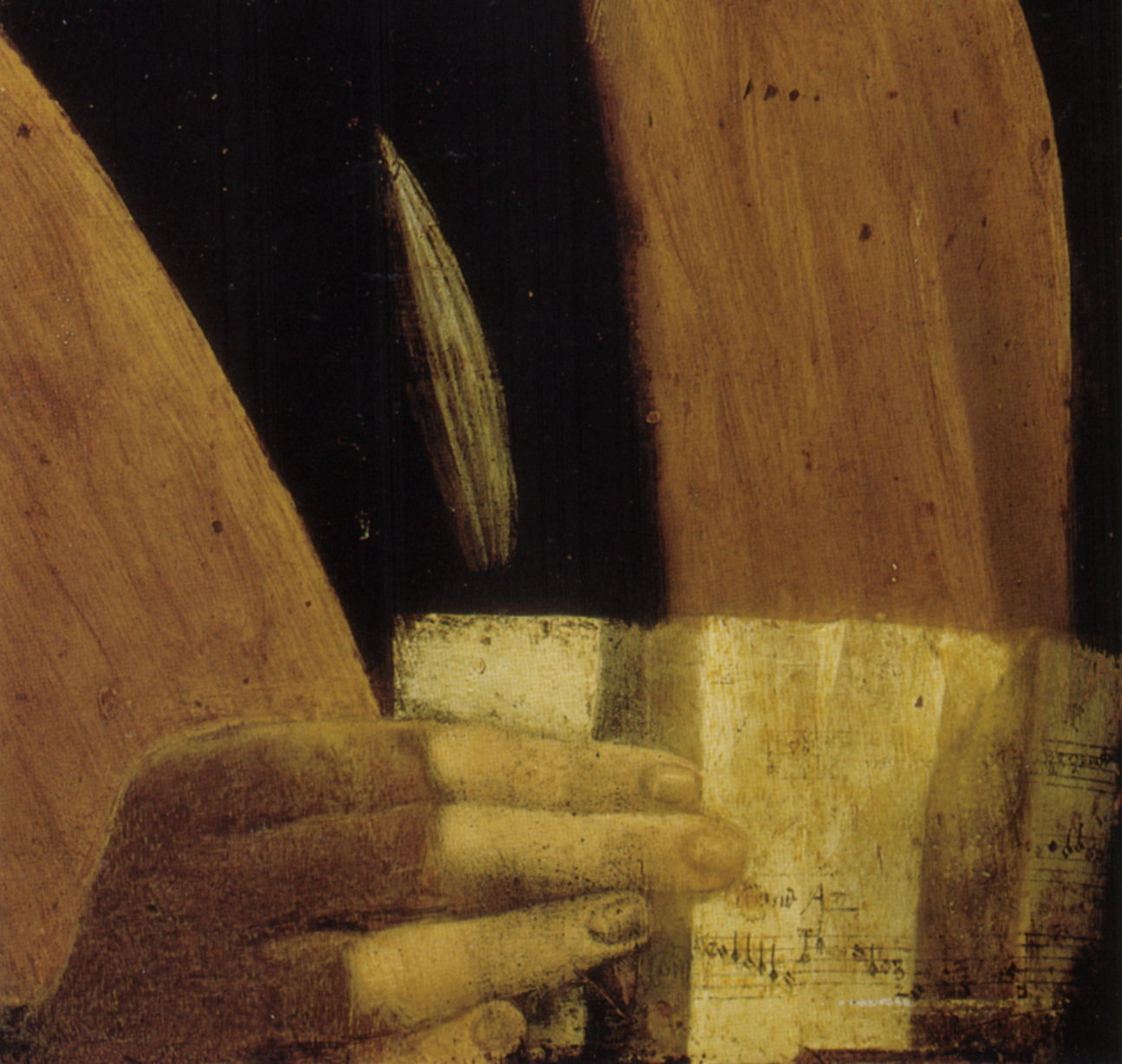 |
See also the episodes 1 to 22 of our New Salvator Mundi History:
Francis I and the Crown of Charlemagne
The Chronicles of Santa Maria delle Grazie
A Brief History of Digital Restoring
Learning to See in Spanish Milan
And:
Leonardo and Josquin
(10.-11.10.2021) »In the history of Western music, more works have been wrongly attributed to Josquin than to any other
composer.«
This 23. episode of our New Salvator Mundi History is supposed to be a meditation on this quote by Josquin des Prez scholar
Willem Elders. Not anyone in Josquin scholarship, but a leading scholar, who had already participated in the first Josquin edition
(started in 1919), and who also has contributed to the new one (begun in 1971). His introductory guide to Josquin (see
literature; quote on p. 57) will be my guide here (especially the chapter on issues of authenticity). And with this episode and the next
I’d like also to invite my readers to an excursion into musicology. I am going to muse about the above quote and, of
course, about what it might say to a Leonardo scholar, but I’d like also to explore the relations between art history and
musicology in general, two fields of the humanities that both are confronted, in their respective ways, with problems of
authorship, and I am particularly interested in the language and notions of musicology, and in the way they deal with
such problems. I am prepared for meeting the unknown (which, usually, after coming home from a journey, can be reviewed
as having been the best part of the journey, the most rewarding and refreshing one, even if, during the voyage, it usually
is the unsettling part…). Last but not least I’d like to recommend to anyone to discover the European Renaissance era
from its musical side. And I would even go as far as saying that, embarking on that trip (respectively writing about it,
after coming back), I have come to learn that I an beginning to trust the beauty of Renaissance music rather more than
the theatre of illusions Renaissance art has provided us with…
One) Who is Afraid of Renaissance Music?
If you are afraid of Renaissance music, try this one: a groovy – yes groovy, because there is no other word –,
a groovy performance of Une mousse de Biscaye, respectively of Josquin’s groovy setting of this song (›mousse‹, or
also ›musque‹ means ›girl‹), here performed by Les Polysolistes. It is a song about a boy-girl encounter. He is
speaking French, she is speaking Basque, and what she says in the refrain, no one knows, because no one understands it
anymore (and perhaps the boy had not understood it either). Scholars seem to be divided, if she is turning him down or
encouraging him. Just: »Soaz, soaz, ordonarequin«, whatever that means. The chasing groove is probably more telling.
I have chosen this example for a number of reasons: first of all because it is captivating music, but also to begin to
look at the famous, but still mysterious Portrait of a Musician, respectively the deplorable state of scholarship as to this famous
portrait. Deplorable because not even one of the everlasting questions has been solved: who is represented in this
portrait (is it Josquin?)? What piece of music is displayed on the sheet of music the musician holds in his hand
(a piece by Josquin?)? And last but not least: who did paint this painting of a musician?
Who does not exactly look as just having finished a groovy performance of Une mousse de Biscaye, and I am certainly
not going to propose just that. But let’s look at the ways the Musician could be interpreted as the portrait of a
musician, because there is a rich choice of possible interpretations (and this richness of possibilities make the
portrait, the design, also a great portrait and a great and very reflected design – about music):
The Musician can be interpreted in a number of ways, and only one way does not seem to be possible: the
Musician is not shown while taking part in a musical performance, he is not shown singing. He can be immersed in a
musical experience, a process of learning, of digesting something he has learned, for example, or trying to process
something one has told him to learn, but in relation to a musical performance, he is either shown as preparing for such
performance, or as just having finished one. He could also be in a state of composing and inner singing, but one thing is
clear: the musician is not just singing aloud. The actual, one might say, the actual musical performance and hearing
experience, is spared and only indirectly addressed. And we look – yes, we look – at music from various sides, and are
immersed, as viewers, in a number of ways one can immerse in music. Which seems the best and perhaps the only way to
address music in pictorial art. And the way this happens shows that this is great art, also about great art.
If we could read the sheet of music, we would know better, in what way the musician is immersed in music, and in which
one. It is not dramatic not to know that – we could see this also as a benefit, because we might be inspired to think
about the portrait, as if it would be about a Marian motet, or, yes, as if it would be about Une mousse. And the
problem did inspire me to look more closely at the performance of Les Polysolistes. And here is how three of them
look while the music is fading. And looking at them, just at the moment they finish (a magnificent) musical performance, inspired
me to think: well, yes, the Musician could also just have taken part in a performance of Une mousse, because the
moment of finishing a musical performance is something serious, complex and complicated, even if it is about a groovy
setting of a frivolous song. It is about being in the music, and to turn into somebody again, who is not in music anymore,
an experience that, also for the listener, is not a simple one. Just as the preparing for a musical performance is not a
simple thing at all (picture below: youtube.com).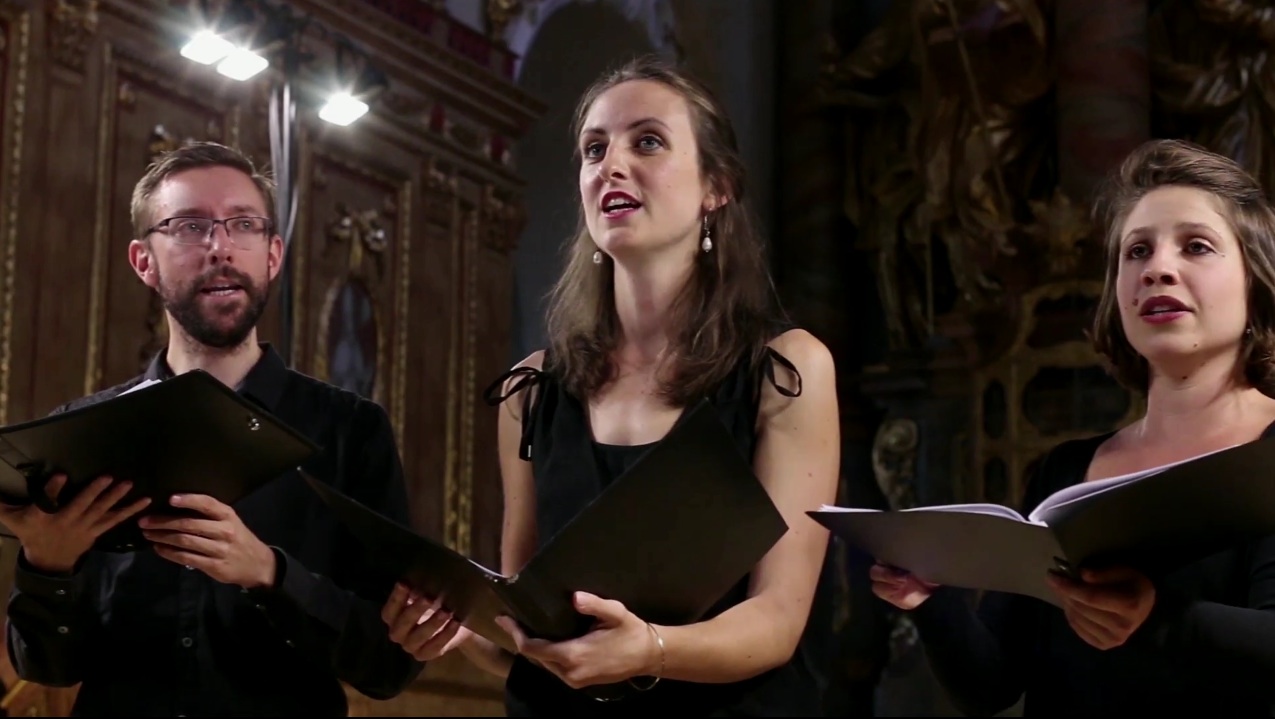
Two) Who is Afraid of Renaissance Notation?
It does make sense, of course, to think that the Musician is preparing for the performance of a Marian motet (or
studying it). But on the other hand I must raise the question here, why, again and again, in Leonardo scholarship things
have to be repeated that, rather easily, can be ruled out. Such as the outdated hypothesis that the sheet of music in the
Musician shows an excerpt ot the Marian motet Illibata dei virgo nutrix by Josquin. Why not just checking the
score? For example here (which is, by the way, another beautiful occasion to get to know fantastic Renaissance music).
One does not have to be a leading musicologist to realize that the eight-note-fragment, which is rather easily legible,
is not from that motet (which has somewhat similar descending lines, but not that musical motif, which displays also a
particular rhythmic structure). Is the piece by Josquin at all?
Also this question can be addressed, at least since the Josquin Research Project of the Universtiy of Stanford has made
available a search tool that allows to search for such motifs. One has to get used to the way one has to ask the tool for
a particular motif, but the system allows searches exactly for such structures. I did try it (I might have made mistakes,
or the passage is not as clearly legible as I thought – dots might be missing for example), but my searches did not
result with matches. The system is searchable for a number of composers, not only Josquin. And I dare to say that a
really committed scholarship might be about to identify the piece of music on the sheet. Either by further searches in
the system, or by involving the community of musicologists. Because a eight-note-motif that is clearly legible can be
identified, in case it is not all-too rare or unknown repertoire.
Finally a brief comment as to the question, if we can see Josquin in the Musician.
I was informed, at an initial stage of my journey, that Josquin had been born around 1440 and that he had sung the bass,
for many years, in the cathedral of Milan. I was informed by an encyclopedia of composers, published in the early 1990s,
and the state of research, today, seems to be that Josquin was born around 1450, and that the informations transmitted by
the aforementioned encyclopedia are due to a confusion with another ›Jodocus‹, indeed a bass singer, but not Josquin,
composer. The name ›Jodocus‹/›Juschinus‹ was common then (and in 1998 the confusion was named; see Elders 2013, p. 63).
Brief: it does not seem impossible, as it did seem some twenty, thirty years ago, to see Josquin in the Musician. But
as far as I can see, there is also no necessity to do just that. Other suggestions do exist. None of them is really
determining the identity of the represented young man. And I am sparing further comment on that particular question.
The question who did paint the portrait, I will discuss in the next episode, if we are prepared for that, and for the
discussion of hybridity. For now it might be enough to simply acknowledge how volatile things are in musicology as in art
history (or in history in general), and that the two fields are in lively interaction. Since, if we would know that the
sheet of music would show a fragment of the aforementioned motet, we would have a clue as to dating (which is delicate in
Josquin). And on the other hand: we would be able to focus our interpretation on a particular piece of music (or its
spiritual background). If this, however, would be a benefit, is not altogether clear, since, as I have said, we would
miss opportunities to think about other dimensions of Renaissance music and of representing music in Renaissance art, as
in art in general. Perhaps the exact truth, sometimes, does limit our field of perception (and thus diminishes our
experience of reality). Perhaps, sometimes, it is better, not to know exactly, because this does make things more
interesting (as perhaps also is the case in Une mousse).
Three) Always Recognizable?
Josquin des Prez died five hundred years ago. And I have listened in also, on occasion of this episode, in some radio
broadcasting, on occasion of this quincentenery, and I have heard a journalist (who is also a musicologist) claiming that
Josquin is ›always recognizable‹. With that we come closer to the heart of the matter, since, on the other hand Willem
Elders does inform us that:
»The issue of authenticity in the case of Josquin is thornier than with any other composer. His compositional activity
over nearly half a century shows different phases of development: while his earliest works display elements in common
with Dufay (d.1474) and Ockeghem (d.1497), his late works point the way towards Palestrina (d.1594). But especially
problematic are the numerous compositions the sources ascribe to both Josquin and one or more of his contemporaries.«
And here we perhaps have reached the heart of the matter: what exactly is it that makes someone say that a composer, or a
painter, is ›always recognizable‹. What is it that can be recognized (what is the exact identifier or the combination of
such clues?)?
And what about the danger to take something as an identifier, which already at the time was an identifier for other
composers or painters, too, and therefore caused a whole wave of influence, blurring the ›being easily recognizable‹. We,
perhaps, cannot have both at the same time: clarity as to attribution (due to recognizable style, including its stylistic
identifiers, usually a combination of things), and outstanding artist. ›Thorny problem‹ goes along with ›always
recognizable‹ and the question of very early and very late works has not even been addressed. ›Thorny problem‹ is the
flipside, as one might say, of ›being always recognizable‹. Which might be the destiny of great artists, having created
great new things and individual styles others creators are being fascinated with. And we learn that, in musicology,
although here it is not about selling and reselling of physical objects, the questions are as thorny as in art history.
The dealers, perhaps it should once be said, are not the main or just the only problem (or a problem at all as such).
Why bother at all, one might now ask. And as someone who, as a student, worked in a CD-shop, I do know that people want
more of the same: for the consumer the question is easily answered – I have to know what I have just heard on the radio,
and people, customers, at the time, brought their cassettes into the shop to have them played to us (the experts), to
identify the song, and it was, then, still the age of the cassette, the CD, whatever it is now.
The question if it does matter if a song is by Guillaume Dufay or by Gilles Binchois, as long as it is a beautiful song,
is a curious one. Usually raised by people unwilling to think (but, as I said, even the consumer does want exact
identification, and exactly the consumer wants it, and also the seller).
But the more curious thing is that the question is usually raised as if the question and the answer to that question does
stand for itself, and as if the answer would be irrelevant. It is not only about the answer as a dry piece of
information. It is also about the culture that does ask such questions and about the way a culture is answering such
questions. For the moment we might perhaps all agree that scholarship is meant to answer any questions of whatever kind
in the best possible and reliable way. Would you still trust scholarship, if it would display a mentality of ›does it
really matter?‹ or a mentality of ›perhaps it does matter to a certain degree, but in the end it is about the beautiful
song?‹. This kind of scholarship would not only dismiss its own purpose and deny its own responsibility, it would also
miss any opportunity of learning things that having to answer such questions might stimulate. At the shop, back then, we
were learning new things every day, and the continuity of having to discern, to listen attentively, and in the end to
identify, is the school of hearing, the school of connoisseurship, as the analog process is in art. It does matter, yes,
for a number of things, and not the least for making you think about what you do hear or do not hear (and why), what you
do perceive or do not perceive (and why), what you do see and what you do not (and why). The answer of any attributional
question, yes, it can be viewed as just another piece of positivist knowledge, just another stone of information rumbling
in your stomach. But it only seems to be irrelevant knowledge, if you are lacking any lively relation with such
informations. And I can tell you that the fan of something, this 20th century creature, does not. The consumer does
not, but the fan is more than a consumer, the fan is someone identifying with something and worshipping something, and
the worshipping, seen as an expression of passion, and the appreciation, the discernment, the connoisseurship stimulated
by such passion, does require exact information (and does not tolerate error). The above question is raised by those
bored and without love and passion for anything, least of all for knowledge, at least for the moment (because these
things can easily change).
Four) Opinion Leaders and Contemporaries
I would recommend every Leonardo scholar to read Willem Elders’ chapter on issues of authenticity and chronology in
Josquin (see Elders 2013, p. 57ff.) for a number of reasons: first of all it is written from the point of view of someone
being familiar with the old and the new Josquin edition, and by someone observing and reflecting about the changes
and the reasons these changes might have or have had. Thus it is not written by someone being an ardent advocate for one
particular canon, but by someone who has accepted that there were many changes, and by someone taking a historical
perspective on these changes, while also trying to explain them and to understand them. Familiar with the situation in
Leonardo scholarship one does not miss the voices of ardent curators fighting for one particular point of view, or of
egocentric professors suggesting that they know everything better than anyone else in the past or in the present time.
A historical perspective can give reason to be modest, expecially if one does accept that also historical premises can
change dramatically: if one does shift the life span of a composer for ten years, many hypothetical constructions simply
can become obsolete.
What is also striking for a reader, familiar with the situation in Leonardo scholarship, is the fact that one can be
interested in the reasons for which works by other composers have been confused with that of Josquin, and this even in
the 16th century, and even by contemporaries of Josquin. To know about such reasons can be more illuminating than to hear
of endless lists of names of alleged luminaries and allegedly authoritative opinions on attribution, and again it is the
historical perspective that makes the shifts in attributions and deattributions more transparent. Leonardo scholarship,
in general, suffers of the lack of a historical perspective on scholarship itself (more on that in one of the next
episodes).
In Leonardo scholarship one would have to start with asking the question of who did inform Vasari, for example, that
works by Salaì, which Leonardo might have had retouched, were taken as originals in Milan. Or with asking the question,
if not Francesco Melzi could have done more to clarify the oeuvre catalogue of Leonardo, especially if Vasari did in fact
interview him (if rather late, and certainly late in Melzi’s life).
Elders offers also telling anecdotes in another chapter, for example of a chapel (p. 31), dismissing a supposed work by
Josquin from its repertoire, after hearing (from the actual composer) that it was indeed not by Josquin. Which reminds of
the many works, once taken as works by Leonardo, that fall into oblivion, although once they had been praised as
masterpieces. Name does matter, apparently, also at the time of the Renaissance, and also as to musical performances.
Illuminating are further the reflections on how early the confusion started in Josquin, as well as on the role early
opinion leaders (as Martin Luther, who did often praise Josquin) might have had as far as the imitation Josquini is
concerned. And one has to remind here that in the course of the media revolution of the Renaissance also the printing of
music was introduced, particularly (if not only) in Venice, where Ottaviano Petrucci enjoyed a veritable monopoly
as for the printing of music (see the example, the tenor part from the chanson Adieu mes amours above).
Finally one might mention that Elders compares the case of Josquin with that of Rembrandt (p. 30), which might inspire
the Leonardo scholar to say that, in the case of Rembrandt a history of attribution and deattribution does exist (written
by Catherine Scallen), a book probably still indispensable, while or just because the everlasting discussion in the field
of Rembrandt studies goes on, rather fuelled than relaxed by the notorious Rembrandt Research Project. In Leonardo
studies, instead, we have a lack of historical perspective and interest, and enduring anarchy.

Five) Interim Conclusion
It is not only the question if we can recognize Josquin; it is also the question if we can recognize Josquin in his
followers. Because if not, we will tend to include ›Josquin in his followers‹ – the imitatio Josquini – in Josquin.
And as a result his oeuvre would expand hyperbolically. Printing might have made the problem worse at the time of the
Renaissance, because Josquin’s methods, his technique could more easily be studied and be dispersed, and from the moment
on the composer was famous, the problem of recognizing Josquin must have multiplied, due to people wanting to participate
in his fame.
As to Leonardo we see, similarly, the problem of recognizing him in his followers, and similarly, we also see the
problem of fame, but the media revolution had no similar effect on the expansion of works attributed to Leonardo, which
rather was the effect of fame, lacking supply, plus a lack of information and discernment. Leonardo’s few works (apart
from The Last Supper) and his working methods could only be studied much later and by few people.
The idea of purity is a construct. Those who seek purity (in art, in religion, in life) will find hybridity. Take Une
mousse: Apart from the text which is a French-Basque hybrid, it is the setting of a folk song – which was not composed
by Josquin – by Josquin. If it is played, it is probably a hybrid of the various versions transmitted, because usually we
have diverse sources (in this case: one printed book and eight manuscripts; see Elders 2013, p. 205). And we don’t know
exactly how Renaissance music did sound like. Hence: What we hear is a hybrid of modern minds and voices bringing
Renaissance music, as transmitted in written sources, to life.
Can the Musician (above right) be thought without the Portrait of a Young Man by Petrus Christus (above left)? Do
we see hybridity also in Leonardo? Or do we want to name the possibly hybrid product on the right as ›Leonardo‹ (this
question will be tackled in the next episode)?
I have spoken about Leonardo and about the fan (fanatic) above, and I’d like to stress here that I do not consider myself
to be a Leonardo fan. I usually find him interesting and subtle, and I admire him if I see admirable things. But at the
moment I would trade three, no, two works by Leonardo (I am not telling which ones) for the Agnus Dei from Pierre de la
Rue’s Missa ›L’Homme armé‹ (you can hear the famous mysterious and fragile canon here).
The Leonardo scholarship of today, as goes without saying, I am not admiring. The lame-duckness by which it is largely
characterized (with exceptions, of course) could need an injection of the rhythmic verve of Une mousse. Also I am not
keen to attribute anything new to Leonardo, but due to my scholarly conscience I have to make an exception as to the
Columbia Portrait of a Noblewoman, whose face, as I am assuming hypothetically (but unreservedly), was painted by
Leonardo (and not by Boltraffio; the rest of the picture was finished by someone else, with Leonardo adding, at best,
some lustre). It is about hybridity everywhere, and this will be the issue of the next episode.
Selected Literature:
William Elders, Josquin des Prez and his musical legacy. An introductory guide, Leuven 2013

The Bottega of Leonardo da Vinci
The picture of the bottega of Leonardo da Vinci is not as blurred as one might imagine (for details see Seidlitz 1935, p. 530; Marani 1998). We will focus here on the early and middle years (up to 1512), and not on the late years, and one might begin with saying that with Boltraffio and Marco d’Oggiono we see two figures enter the orbit of Leonardo at the beginning of the 1490s that we believe to know rather well. We also see Salaì enter the orbit, at a very young age, and we have, in addition to that, a couple of names, names of figures that we do not seem to know very well, or not at all (a Giacomo, Giulio Tedesco, Galeazzo). Last but not least we have the Giampietrino problem: Giampietrino enters the scenery, but it is a matter of controversy (as far as this question is debated at all), when, since also Giampietrino is still very young.
It is noteworthy that Marco d’Oggiono, already at the end of the 1480s, seems to have had an own apprentice, and that Marco and Boltraffio did create the Pala Grifi together (a picture today in Berlin; picture above), even before Leonardo began to work at The Last Supper in 1495. Due to the work of Janice Shell and Grazioso Sironi we today do know more about Francesco Galli, also called Francesco Napoletano, who did die in Venice as early as 1501. One might imagine that Galli went to Venice with Leonardo in 1501, and if Galli, during the 1490s, for example might have cooperated with Marco, we would have found an interesting perspective: since, if only one single picture of the Marco group would be associated with Francesco Galli/Francesco Napoletano, we would have a picture with hand option 2, a picture that must have been created before Galli died in 1501. Which would mean that hand option 2 must have existed early, and my theory of the pentimento in version Cook as a mere switching from (preexisting) option 1 to (preexisting) option 2 would be positively proven as well as the theory of the pentimento supposedly showing the creative energy of genius (changing his mind) would be definitively falsified.
Brief: in the 1490s Leonardo mentions once that he had paid ›two masters‹ (probably Marco and Boltraffio) for two years; and once that he had six bocche to feed (probably again Marco, Boltraffio, plus Salaì and some of the unknowns).
Below a rather early Marco picture (according to Janice Shell), the Young Christ Blessing of the Galleria Borghese:
And here is a picture (not the only known picture) by Protasio Crivelli, formerly the apprentice of Marco d’Oggiono (picture by Sailko; the date appears to be 1498; location: Naples, Museo di Capodimonte):
In 1501 (3.4.) Pietro da Novellara informs Isabella d’Este that Leonardo seems to live ›from day to day‹ (see Marani 1998, p. 14). And he has seen Leonardo intervening from time to time in portraits done by two of his garzoni (»fano retrati«). But who are these, and which portraits are these (if this would have been about a Isabella d’Este portrait, Pietro would have noted; and after the Sforza had been expelled, portraits of court ladies and courtiers made no sense)? After having written on the picture of a young woman in the Columbia Museum of Art in one of the last episodes, I would now suggest the following:
Leonardo might have done a portrait of a Sforza court lady in the early Milanese years (and still in the Florentine portrait style), a portrait in terms of a drawing or a cartoon. He might have begun also a painting, but since the Sforza court got expelled and exiled after the French invasion, he might not have finished such portrait. He might instead have used it for the instruction of his garzoni: the Columbia picture might have been the one begun by Leonardo (as he seems to have begun portraits with the face, as later in the Mona Lisa), a picture that he might have had a pupil finish, with him retouching it again, adding some lustre. The picture in a private Russian collection might be a second version that he had a pupil repeat (after the first version and the drawing, respectively the cartoon). The Columbia picture shows much gusto for the grotesque, the second version less so, but still to some degree. Thus we would see pictures that have their origins in the first Milanese period (and even in the early Florentine period), but were actually done later (after 1500). And Leonardo might have had a hand in the Columbia picture whose head with the hair as well as the ornated hair net superbly being modelled into the dark is of exquisite quality (as also a single one pearl is, while other pearls are rather mediocre as also the bust and the modelling of the dress is). We see, as I have attempted to show in episode 13, two pictures that fit into the context of Leonardo’s thinking and doing rather than into the context of Boltraffio’s autonomous work: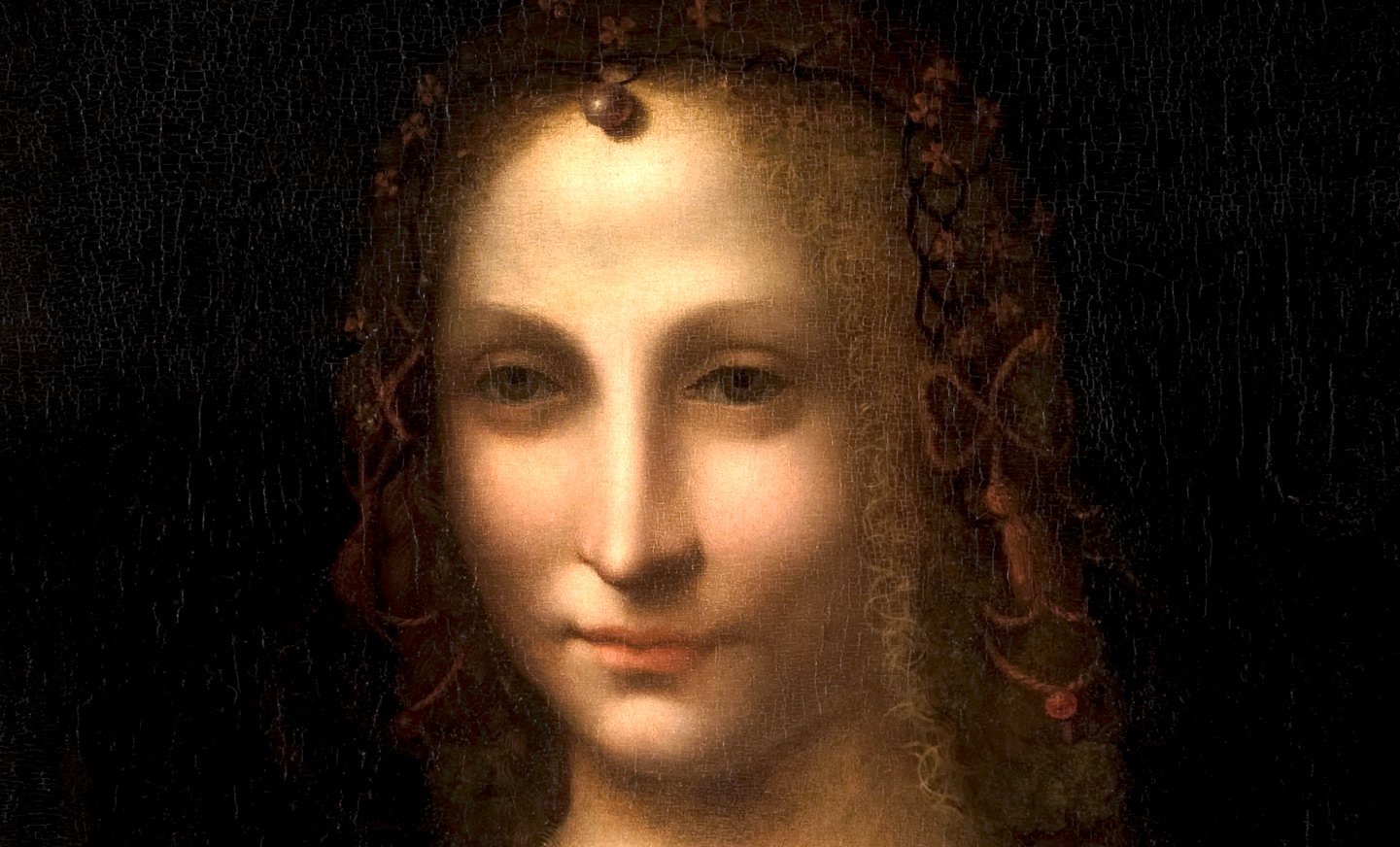
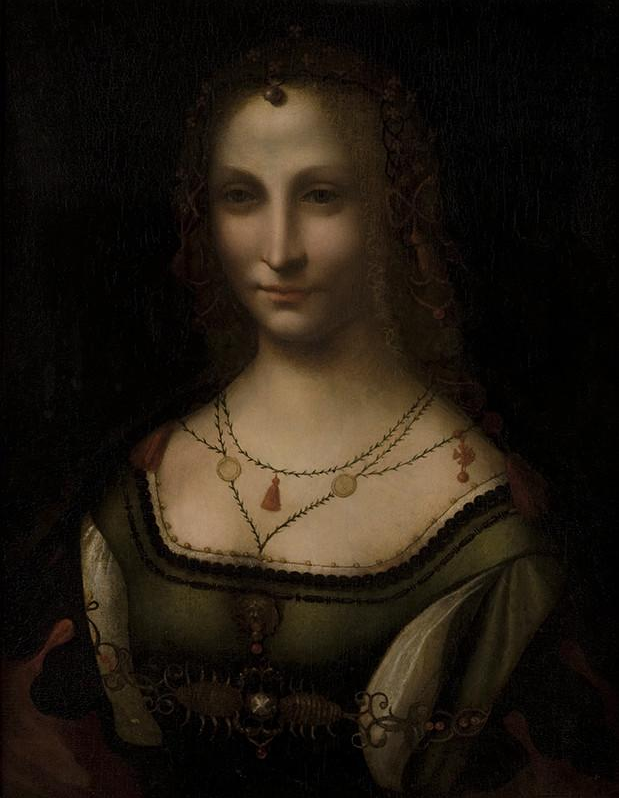
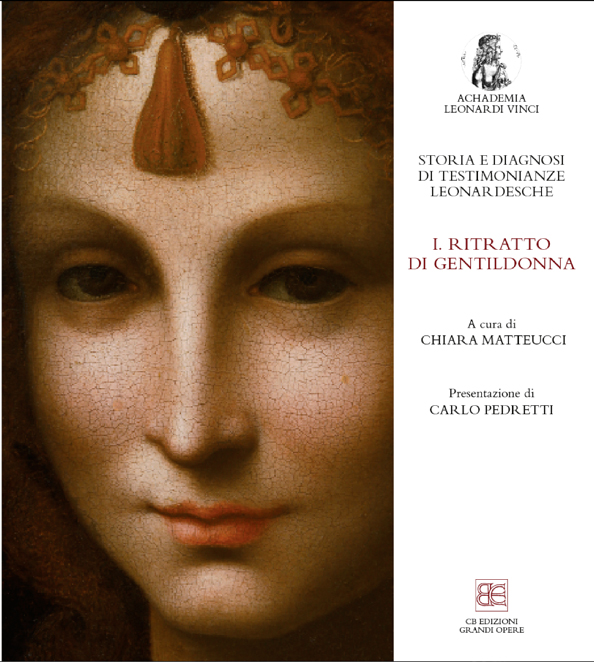
In 1504 a Jacopo Tedesco, in 1505 a Lorenzo (di Marcho) enter the orbit of Leonardo.
In around 1505 Fernando Yáñez enters the orbit of Leonardo, helping him with the Battle of Anghiari (as also does Riccio della Porta). Yáñez cannot be the author of the Prado Mona Lisa, if the Louvre Mona Lisa was finished only years later, since the dates (showing that Yáñez was active in Spain after 1506) do not allow to postulate it. In works of Yáñez done in Spain, however, we find echoes of Leonardo’s works (see the example below).
Around 1507 Francesco Melzi becomes a pupil of Leonardo (and also a sort of secretary).
In 1511 (or even earlier) Giampietrino is an autonomous master.
In 1511 Salaì seems to have created a (signed and dated) picture of Christ:
In around 1511 we see Marco, Boltraffio, Giampietrino and – Giovanni Agostino da Lodi in close contact, not only because we have a source indicating exactly that – we also have pictures indicating exactly that, and one of these pictures seems to be even dated (but the ›date‹ – ›XII‹ – is rather referring to the ›age of Christ‹):
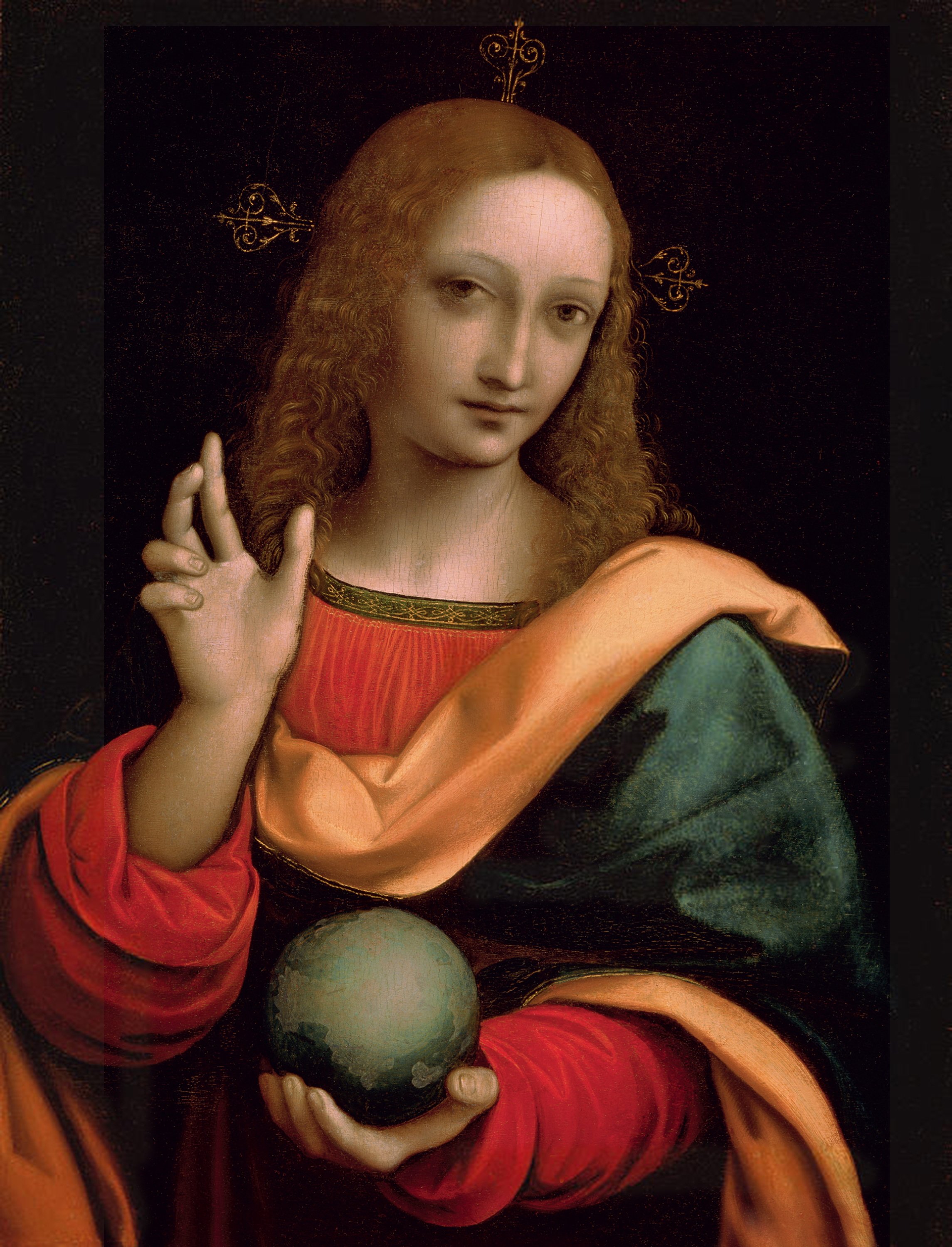
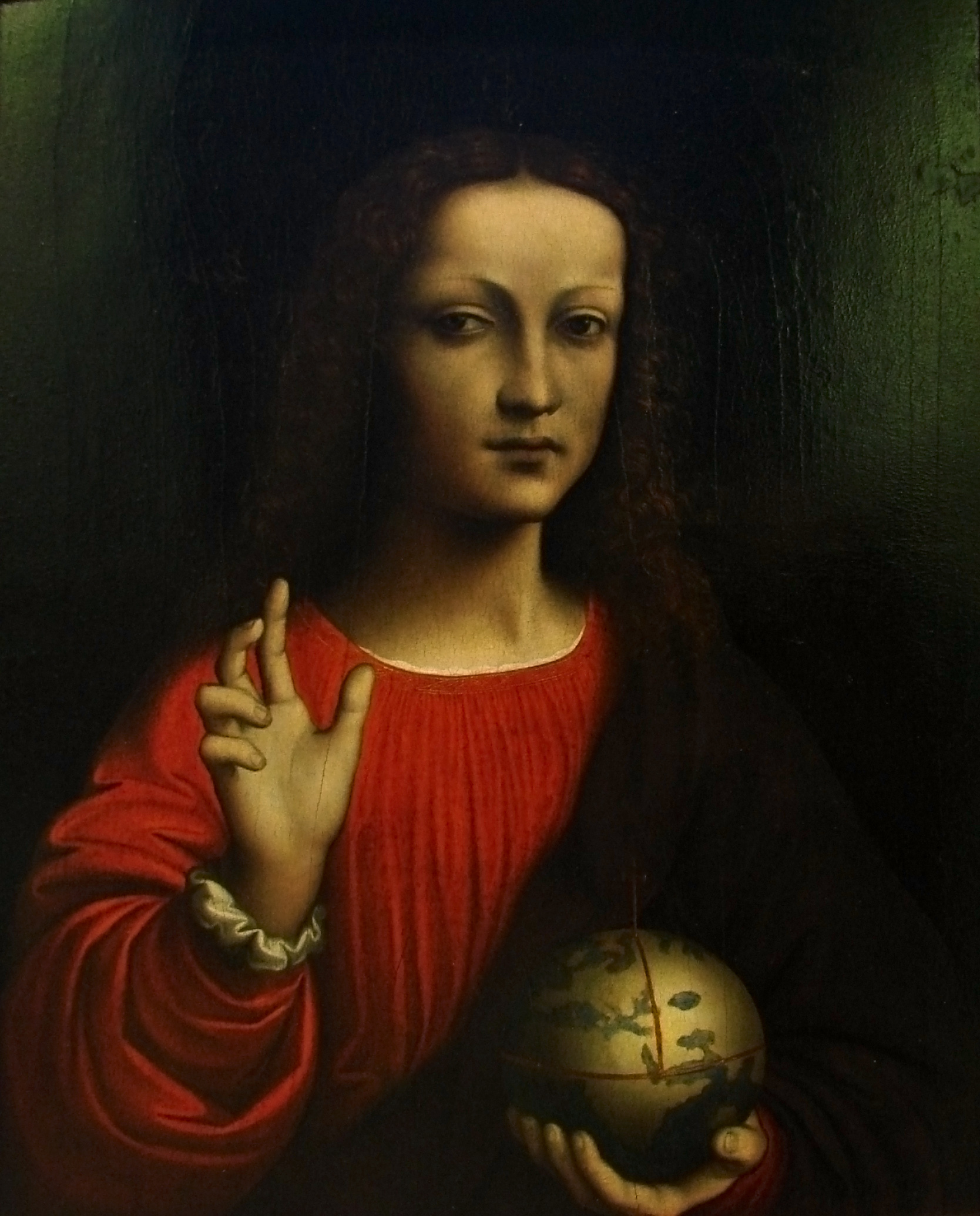
The Prado Mona Lisa (below) was probably begun at the time Leonardo also started reworking or completing the Louvre Mona Lisa, probably due to Giuliano de’ Medici wishing so, and hence perhaps in around 1511/12.
In around 1517 Marco d’Oggiono is cooperating with Giovanni Agostino da Lodi (see Shell, p. 173).
***
1516: Paolo Emilio, Italian-born humanist at the court of Francis I, publishes the first four books of his history of the Franks; death of Boltraffio.
1517: Leonardo da Vinci, with Boltraffio and Salaì, has come to France (picture of Clos Lucé: Manfred Heyde); 10.10.2017: Antonio de Beatis at Clos Lucé
1517ff: Age of the Reformation; apocalyptic moods; Marguerite of Navarre, sister of Francis I, will be sympathizing with the reform movement; her daughter Jeanne d’Albret, mother of future king Henry IV, is going to become a Calvinist leader.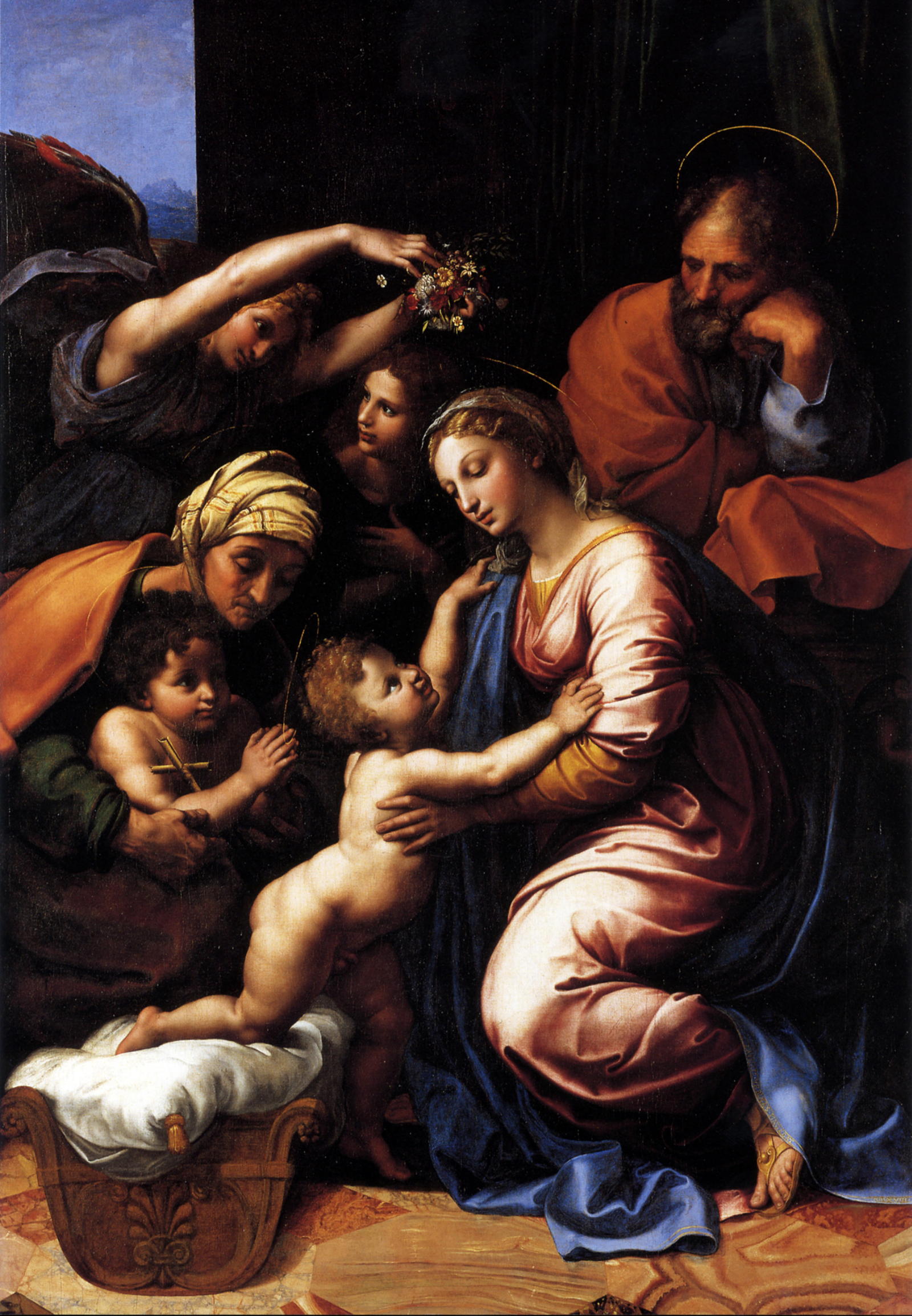
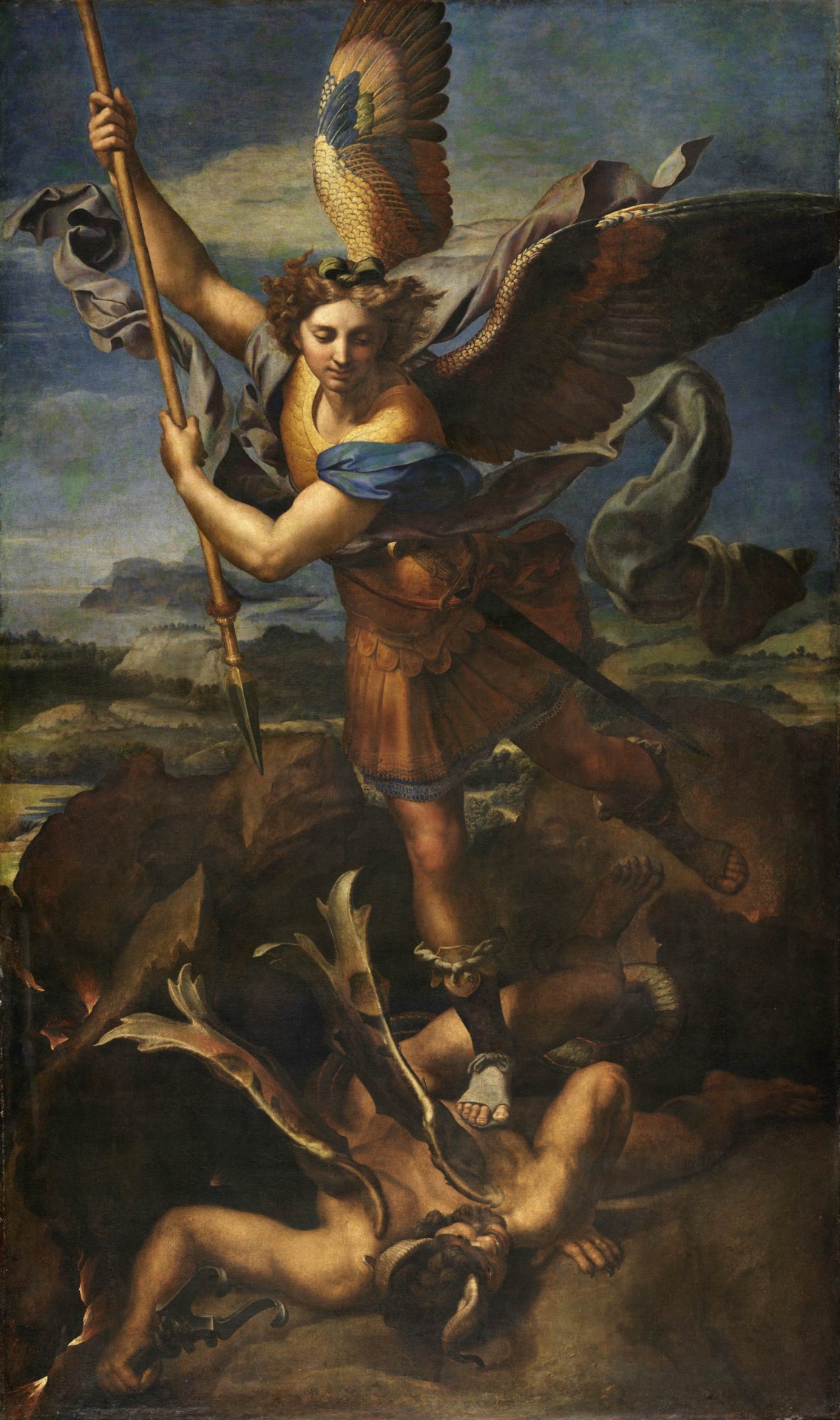
1518: the Raphael workshop produces/chooses paintings to be sent to France; 28.2.: the Dauphin is born; 13.6.: a Milanese document refers to Salaì and the French king Francis I, having been in touch as to a transaction involving very expensive paintings: one does assume that prior to this date Francis I had acquired originals by Leonardo da Vinci; 19.6.: to thank his royal hosts Leonardo organizes a festivity at Clos Lucé.
1519: death of emperor Maximilian I; Paolo Emilio publishes two further books of his history of the Franks; death of Leonardo da Vinci; Francis I is striving for the imperial crown, but in vain; Louise of Savoy comments upon the election of Charles, duke of Burgundy, who thus is becoming emperor Charles V (painting by Rubens).
1521: Francis I, who will be at war with Hapsburg 1526-29, 1536-38 and 1542-44, is virtually bancrupt.
1523: death of Cesare da Sesto.
1524: 19.1.: death of Salaì after a brawl with French soldiers at Milan.
1525: 23./24.2.: desaster of Francis I at Pavia. 21.4.1525: date of a post-mortem inventory of Salaì’s belongings.
1528: Marguerite of Navarre gives birth to Jeanne d’Albret (1528-1572) who, in 1553, will give birth to Henry, future French king Henry IV.
1530: Francis I marries a sister of emperor Charles V.
1531: death of Louise of Savoy; the plague at Fontainebleau.
1534: Affair of the Placards.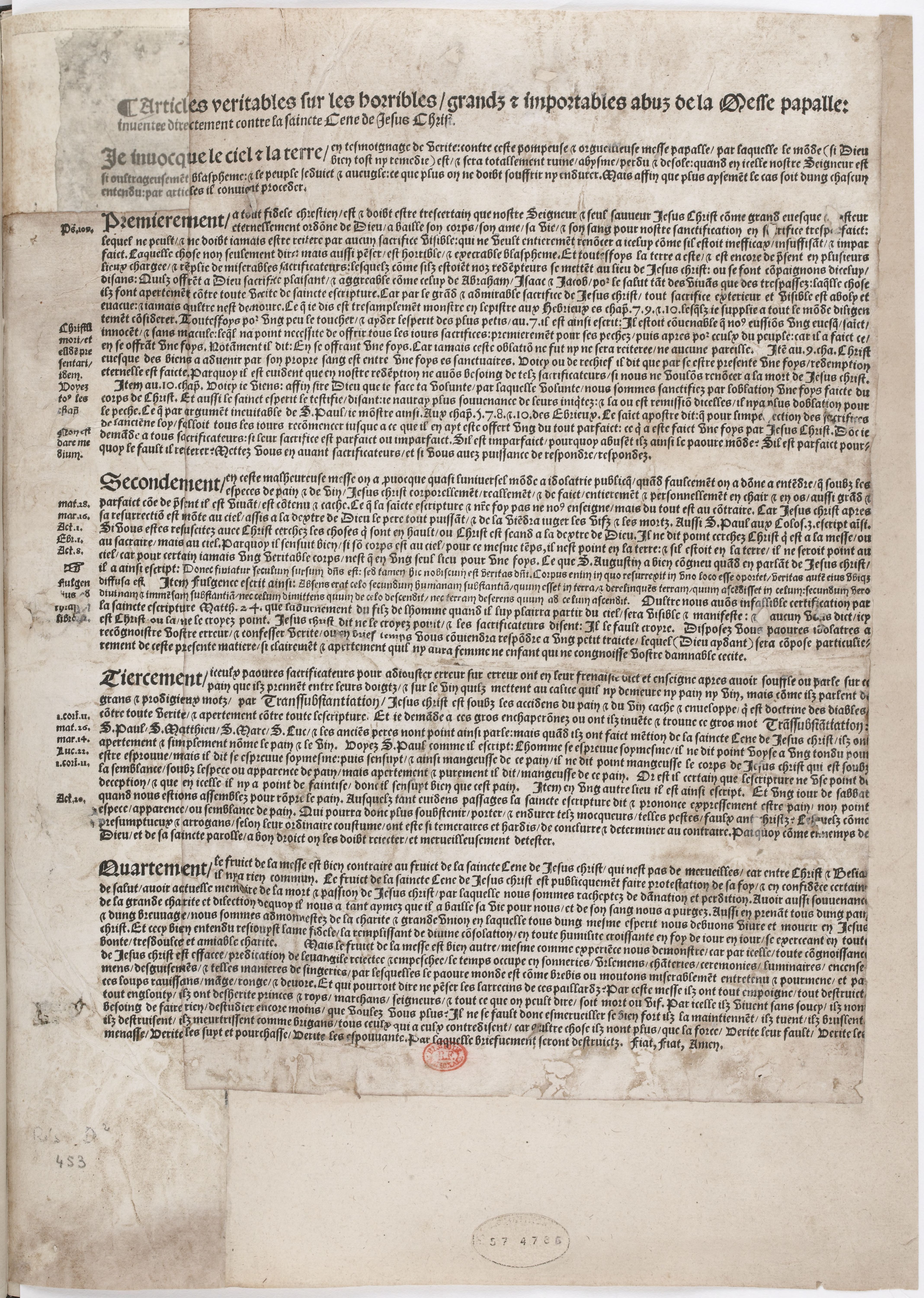
1539: the still unfinished chateau of Chambord is being shown by Francis I to Charles V.
1540s: the picture collection of Francis I being arranged at Fontainebleau.
1544: January: Marguerite of Navarre sends a letter of appreciation to her brother, king Francis I., who has sent her a crucifix, accompanied by a ballade, as a new year’s gift.
1547: death of Francis I.
1549: death of Marguerite de Navarre; death of Giampietrino.
1553: Jeanne d’Albret gives birth to Henry, the future French king Henry IV and first Bourbon king after the rule of the House of Valois.
1559: publication of the Heptaméron by Marguerite de Navarre.
1562-1598: French Wars of Religion.
1570: death of Francesco Melzi.
1589: Henry, grandson of Marguerite de Navarre and grand-grandson of Louise of Savoy, but by paternal descent a Bourbon, is becoming French king as Henry IV.
2015: an exhibition at the Château of Loches is dedicated to the 1539 meeting of king and emperor (see here).
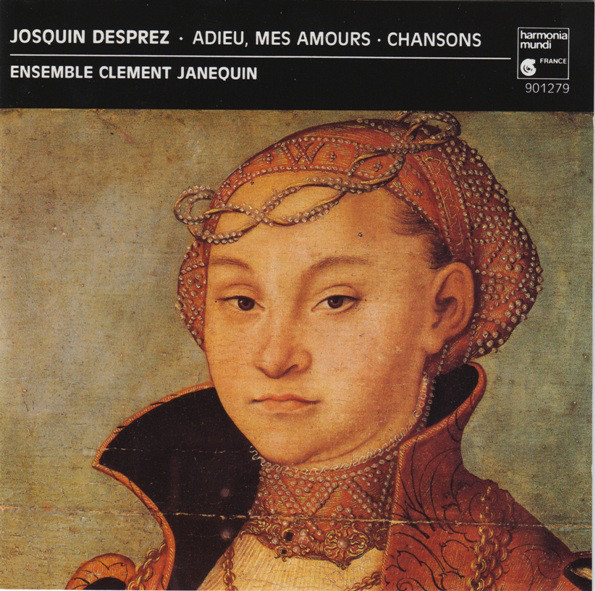
Perhaps a little surprising at first sight – to see a portrait by Lucas Cranach the Elder, chosen as the cover of a CD (picture above: discogs.com) with compositions of Josquin des Prez. But the music of Josquin – and the success of Josquin – was a European phenomenon. And as we have seen, Luther was a sort of opinion leader as far as the appreciation of Josquin was concerned. We see another, not a Milanese, but a Saxonian noblewoman. But we also have to acknowledge that Lucas Cranach was another painter who did – just like Leonardo – explore how the relation between viewer and a portrait could be organized: by a direct gaze, by a piercing, even inquisitory, unfathomable gaze, for example, which might be called one extreme of organizing this relation. And of challenging a viewer. Who looks back at a portrait that, as far as the gaze of the viewer is concerned, reacts like a mask. Which means: it seems that it does not react at all, because we don’t see any, or only little signs of outer or inner movement, raising the question, if, apart from the gaze, here we see a relation rather – or a duel: concerning the question ›who is the one who is more fathomable?‹. Is it the portrait or the viewer?
The work by Cranach does exist in two versions, and only one has a – more or less – direct gaze, that inspires us, again, to look at the Columbia portrait, the portrait of a Milanese noblewoman (and yes, I do think that Leonardo might have painted this face; we do know that Leonardo started a portrait with the face, and even if it was not Leonardo himself who did finish this picture (or was responsible for the rest of it), in my opinion there might be more Leonardo in this picture than – for example in the Musician (more on both in the next episode). Our journey into musicology does already bear fruits in the field of art history. And I can only recommend further such excursions. Finally: the gaze of the Cranach portrait is definitely less piercing, and less direct than that of the Milanese noblewoman. The Saxonian noblewoman seems to be torn between looking at the viewer and distractely looking right through him, or even turning away from him, which might be interpreted as a sign of an inner movement. Of saying: ›I am sitting for you, but you are not important enough to distract me from my thoughts, my inner movements, my mourning or my joys. And these are none of your business, after all, even if I am sitting for you.‹ Our comparison results with saying: the Columbia portrait is decidedly the more extreme one, that seems to say: ›You know absolutely nothing about me – and you never will. Because it is my fate, my destiny, to reflect your gaze, as if my beautiful face was just a cold mask. And a sitter I am, too, but I am sitting here until the end of times.‹


See also the episodes 1 to 22 of our New Salvator Mundi History:
Francis I and the Crown of Charlemagne
The Chronicles of Santa Maria delle Grazie
A Brief History of Digital Restoring
Learning to See in Spanish Milan
And:
MICROSTORY OF ART
ONLINE JOURNAL FOR ART, CONNOISSEURSHIP AND CULTURAL JOURNALISM
HOME
© DS